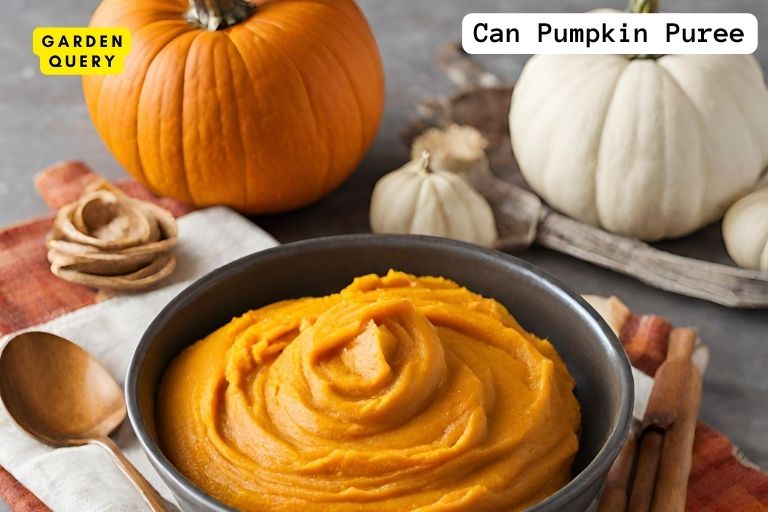How Many Pumpkins Grow On A Vine?
How Many Pumpkins Grow On A Vine
When it comes to pumpkins, many people wonder just how many can grow on a single vine. While there is no one-size-fits-all answer, understanding the growth patterns of pumpkin vines and the factors that influence pumpkin production can give us some insights.
Overview of pumpkin vines and their growth patterns
Pumpkin vines are known for their vigorous growth and sprawling nature. They can extend up to 20 feet or more, with numerous stems sprouting from a central root system. Each stem has the potential to produce multiple pumpkins along its length.

The number of pumpkins that can grow on a vine depends on various factors such as the variety of pumpkin, growing conditions, and proper care. Some varieties, like the miniature or ornamental pumpkins, typically produce more fruits per vine compared to larger varieties.
Additionally, pumpkin vines are known to produce both male and female flowers. The female flowers, which have a small bulb at their base, have the potential to develop into pumpkins if properly pollinated. However, not all female flowers will result in pumpkin production.
Factors affecting the number of pumpkins on a vine
Several factors can influence the number of pumpkins that grow on a vine:
- Pollination: Pumpkins require pollination for fruit development. Bees and other pollinators play a crucial role in transferring pollen between male and female flowers. A lack of pollination can result in fewer pumpkins.
- Plant health and nutrition: Healthy and well-nourished plants are more likely to produce a higher number of pumpkins. Providing adequate water, fertilizer, and maintaining proper soil pH can promote optimal plant growth and pumpkin production.
- Space and pruning: Properly spacing pumpkin plants and pruning excessive foliage can improve air circulation and sunlight penetration. This can enhance the overall health of the plant and increase the number of pumpkins.
- Pest and disease control: Protecting pumpkin plants from pests and diseases is essential for maximizing pumpkin production. Regular monitoring, early detection, and appropriate control measures can minimize the negative impact on plant health and fruit development.
In conclusion, the number of pumpkins that can grow on a vine can vary depending on various factors. By understanding the growth patterns and providing proper care and maintenance, gardeners can increase their chances of achieving a bountiful pumpkin harvest.
Types of Pumpkins
Different types of pumpkins and their vine requirements
When it comes to pumpkin vines, not all varieties are created equal. Different types of pumpkins have varying vine requirements, which can directly affect the number of pumpkins that grow on a vine.
For instance, sprawling varieties, such as the Atlantic Giant or Big Max, have long vines that can spread up to 20 feet or more. These pumpkins tend to produce fewer pumpkins per vine, but the ones that do grow can reach massive sizes, often exceeding 100 pounds. On the other hand, compact or bush-type pumpkins, like the Sugar Pie or Jack Be Little, have shorter vines that extend only a few feet. These varieties typically produce more pumpkins per vine, but they are generally smaller in size.
Effect of pumpkin variety on the number of pumpkins per vine
The type of pumpkin variety you choose directly impacts the number of pumpkins that can grow on a vine. Large pumpkins, such as the Atlantic Giant, tend to produce fewer pumpkins per vine, focusing their energy on growing one or two gigantic fruits. Medium-sized varieties, like the Howden or the Cinderella, typically produce three to five pumpkins per vine. Smaller pumpkins, such as the Sugar Pie or Jack Be Little, can yield a higher number of pumpkins per vine, often between six and ten.
It’s important to consider your space constraints, growing conditions, and personal preferences when selecting a pumpkin variety. If you have limited space, compact varieties with higher pumpkin yields may be a better choice. However, if you have ample space and are aiming for impressive size and weight, larger varieties with fewer pumpkins per vine may be more suitable.
In conclusion, the number of pumpkins that grow on a vine varies depending on the type of pumpkin and its vine requirements. Understanding these differences can help you make an informed decision when choosing a pumpkin variety for your garden. So, whether you’re going for quantity or size, there’s a pumpkin out there that can meet your needs.
Environmental Factors
Sunlight and its impact on pumpkin vine productivity
Pumpkins are plants that require an adequate amount of sunlight to thrive. In fact, sunlight is a crucial factor that determines the productivity of pumpkin vines. Pumpkin plants typically require around 6 to 8 hours of direct sunlight per day for optimal growth. When a pumpkin vine receives sufficient sunlight, it promotes photosynthesis, which in turn enhances the production of carbohydrates and overall plant health. Therefore, it is essential to choose a location for planting pumpkins where they can receive ample sunlight throughout the day.
Temperature and its influence on pumpkin growth
Temperature is another crucial environmental factor that significantly affects the growth of pumpkin vines. Pumpkins prefer warm weather conditions, with temperatures ranging between 70 to 95 degrees Fahrenheit (21 to 35 degrees Celsius). When the temperature is within this range, the vines grow vigorously, resulting in better fruit production. Extreme temperatures, such as frost or excessive heat, can negatively impact the growth and development of pumpkins. Cold temperatures can harm the vines, while excessive heat can cause wilting and flower drop. Therefore, it is important to monitor the temperature and provide necessary protection, such as using mulch or shade cloth, to maintain an optimal growing environment for pumpkin vines.
In conclusion, environmental factors such as sunlight and temperature play a vital role in the productivity and growth of pumpkin vines. Ensuring that pumpkins receive sufficient sunlight and maintaining an appropriate temperature range will help maximize the number of pumpkins that grow on a vine. By taking these factors into consideration, gardeners can increase the chances of a bountiful pumpkin harvest. So, when planning your pumpkin patch, be mindful of these crucial environmental factors and set your vines up for success.
[LINK]
Growing Techniques
Pruning techniques to maximize pumpkin production
Pruning plays a crucial role in maximizing pumpkin production. Regular pruning helps remove excessive foliage and redirects the plant’s energy towards fruit production. Here are some pruning techniques to consider:
- Vine Trimming: Trimming the vine allows the plant to direct its resources to the pumpkins. Remove any non-fruit-bearing vines that may be drawing energy from the main vines.
- Remove Secondary Vines: Secondary vines often grow from leaf nodes along the main vine. Removing these secondary vines helps redirect energy towards the main vine, resulting in bigger and healthier pumpkins.
- Pinching Off Extra Blossoms: It’s important to selectively remove some of the blossoms to allow the plant to focus on fewer fruits. This will promote larger and more robust pumpkins.
Fertilization and its role in increasing pumpkin yields
Proper fertilization is key to increasing pumpkin yields. Here are some important considerations for fertilizing your pumpkin plants:
- Soil Testing: Conduct a soil test to determine its nutrient composition and pH levels. Understanding your soil’s needs will help you provide the appropriate fertilizers.
- Organic Matter: Add organic matter to the soil, such as compost or well-rotted manure. This enriches the soil with essential nutrients and improves its structure, promoting healthy root development.
- Nitrogen, Phosphorus, and Potassium: Use a balanced fertilizer that contains nitrogen, phosphorus, and potassium (NPK) in the appropriate ratios. Nitrogen promotes leaf and vine growth, phosphorus supports flower and fruit development, and potassium enhances overall plant health.
- Timing: Apply fertilizers at the right time during the growing season. Start with a high-nitrogen fertilizer early in the season to support initial growth, then switch to a higher-potassium fertilizer when the fruits begin to develop.
Remember, too much fertilizer can harm the plants and affect fruit development, so always follow the recommended application rates.
Growing pumpkins on a vine requires careful attention to pruning techniques and proper fertilization. By implementing these practices, you can maximize pumpkin production and ensure impressive yields.
Pest and Disease Management
When it comes to growing pumpkins, it is essential to understand the potential risks and challenges that can affect the vines. By being proactive in pest and disease management, you can maximize pumpkin growth and ensure a bountiful harvest.
Common pests and diseases that affect pumpkin vines
Pumpkin vines are susceptible to a variety of pests and diseases. Here are some of the most common ones to watch out for:
- Powdery mildew: This fungal disease appears as a white powdery coating on the leaves, stems, and fruits of pumpkin vines. It can stunt growth and reduce yield if left untreated.
- Cucumber beetles: These small, yellow-and-black striped beetles can transmit bacterial wilt disease to pumpkin plants. They can also feed on the leaves and fruits, causing damage and reducing overall plant health.
- Squash bugs: These pests feed on the leaves, stems, and fruits of pumpkin vines, causing wilting, yellowing, and fruit damage. Additionally, they can transmit bacterial diseases to the plants.
Preventive measures to protect the vine and maximize pumpkin growth
To keep your pumpkin vines healthy and productive, here are some preventive measures you can take:
- Plant disease-resistant varieties: Choose pumpkin varieties that have been bred to resist common diseases, such as powdery mildew.
- Maintain good garden hygiene: Keep your garden clean and free from plant debris that can harbor pests and diseases. Remove any affected plants promptly to prevent the spread of diseases.
- Monitor regularly: Regularly inspect your pumpkin vines for signs of pests or diseases. Early detection allows for prompt treatment and prevents the problem from worsening.
- Practice crop rotation: Avoid planting pumpkins or other cucurbits in the same location every year. Crop rotation helps minimize the buildup of soil-borne diseases and pests.
- Implement organic pest control: Utilize organic pest control methods, such as companion planting, beneficial insects, and organic insecticides, to manage pest populations without harming the environment or beneficial organisms.
By being proactive in pest and disease management, you can protect your pumpkin vines and ensure a successful harvest. Remember to monitor regularly, take preventive measures, and promptly address any issues that may arise. Happy pumpkin growing!
Harvesting and Yield
For pumpkin lovers and enthusiasts, understanding how pumpkins grow on a vine can be fascinating. From determining the right time to harvest to maximizing the yield per vine, let’s dive into the details.
Determining the right time to harvest pumpkins
- Maturation period: Pumpkins typically take around 75-100 days from planting to mature and be ready for harvest. However, this may vary depending on the variety and growing conditions.
- Color and rind hardness: To determine if a pumpkin is ripe, check its color and rind hardness. Most pumpkins will develop their characteristic color, whether it’s orange, green, or another shade. Additionally, the rind should be hard and resist punctures when pressed with the fingernail.
- Stem drying: Another sign of readiness is stem drying. The stem attached to a ripe pumpkin should be dry and brown. If it’s still green, the pumpkin may not be fully matured.
Factors to consider for maximizing the yield per vine
- Proper spacing: Adequate spacing between pumpkin vines is essential for optimal growth and yield. Each pumpkin plant should have enough space, usually around 3-5 feet between hills, to ensure they don’t compete for nutrients and sunlight.
- Pollination: To ensure successful fruit set, proper pollination is crucial. Bees are the primary pollinators for pumpkins, so encouraging bee activity in your garden can help maximize the yield.
- Regular watering and fertilization: Providing consistent moisture and proper nutrition to the pumpkin plants is vital for their growth and yield. Water the vines regularly, especially during dry spells, and use a balanced fertilizer to provide essential nutrients.
- Pest and disease management: Regular monitoring for pests and diseases can prevent them from affecting your pumpkin yield. Take appropriate measures, such as using organic pest control methods and practicing good garden hygiene.
By understanding the process of pumpkin growth on a vine and implementing these factors, you can ensure a successful harvest and maximize the yield per vine.
Tips and Tricks for Better Pumpkin Growth
Expert tips for increasing the number of pumpkins on a vine
Pumpkins are not only fun to carve for Halloween but also a delicious addition to any fall dish. If you’re wondering how many pumpkins grow on a vine, the answer depends on a few factors. However, by following some expert tips, you can maximize your pumpkin harvest.
- Prune and train your vines: To encourage more pumpkins to grow, it’s important to prune and train your vines properly. This involves removing excess foliage and guiding the vines along a trellis or support system.
- Fertilize regularly: Pumpkins are heavy feeders, so make sure to fertilize your plants regularly. Use a balanced fertilizer high in phosphorous, which promotes flower and fruit development.
- Provide adequate water: Pumpkins need about 1-2 inches of water per week, so make sure to water them deeply and consistently. Avoid overwatering, as this can lead to rot and disease.
Factors to consider for optimal pumpkin vine health
To ensure the health of your pumpkin vines and maximize their potential, consider the following factors:
- Sunlight: Pumpkins thrive in full sun, so make sure to choose a location in your garden that receives at least 6-8 hours of direct sunlight per day.
- Soil quality: Pumpkins prefer well-draining soil with a pH level between 6.0 and 7.5. Amend your soil with organic matter, such as compost, to improve fertility and drainage.
- Pollination: Pumpkins require pollination to set fruit. Encourage pollinators, such as bees, to visit your garden by planting a variety of flowers and avoiding pesticide use.
By following these expert tips and considering the factors mentioned, you can increase the number of pumpkins that grow on a vine and enjoy a bountiful harvest. Remember to be patient and provide the necessary care throughout the growing season to ensure healthy and vibrant pumpkins.
- Best Therapists In Dallas - February 1, 2024
- Holly Willoughby Husband: Holly Willoughby’s Love Story - January 30, 2024
- Holly Willoughby Dress: 5 Style Secrets and 7 Must-Know Career Milestones - January 30, 2024





